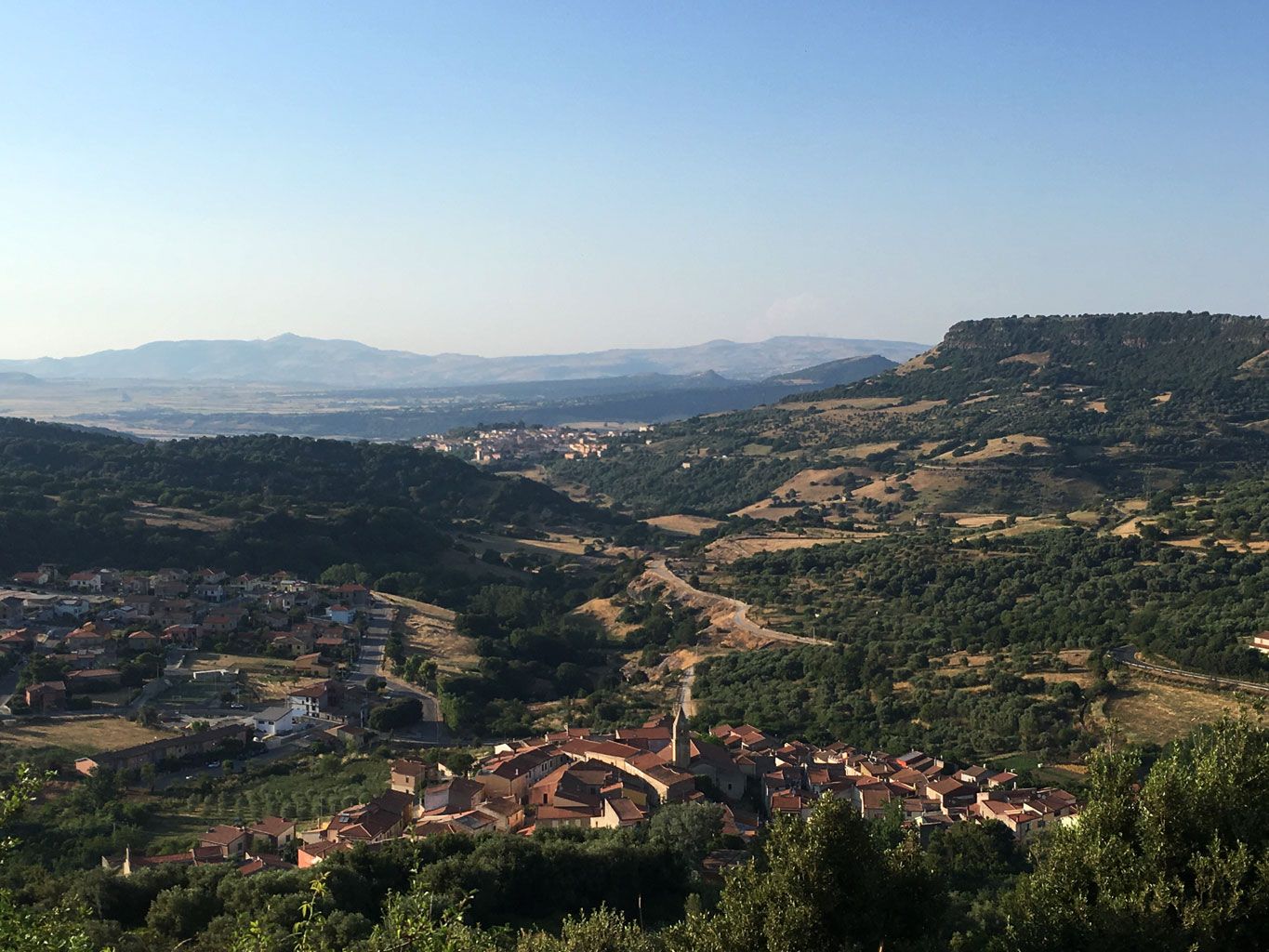
220/377: Bessude
INSPIRATION

Today it’s a very short and downhill journey. The torrid heat continues but it seems that even 2 degrees less feel pleasant!
I arrive in Bessude, a small village of about 400 inhabitants, and Carlo welcomes me to his b&b Il Mirto, on the main road, a beautiful renovated historic building, where I will be a guest. After a coffee at the bar, Carlo takes me around the streets of the historic center to visit the churches. At first the parish church of San Martino, dating from 1620, very well maintained, with a Gothic-style architecture, which contains a beautiful statue of the Sleeping Mary.

Walking a bit, we arrive at the much older church of San Leonardo, dating back to around 1300, where the village cemetery was also located. From the square you can admire the view over the whole valley, and the nearby Siligo and Banari. We then go to the small church of Santa Croce, where I am struck by a beautiful floor of two-tone octagonal slabs, slate and white marble. Then Carlo takes me by car to the new area to get something to eat for lunch, while we pass by the rural church of Santa Maria di Runaghes.

In the late afternoon, having digested food and churches, Carlo and his father Gavino take me to MuMe, the Museum of Medieval Meilogu traditions, which is located in an old well-restored noble house, called Sa Domo de Sas Damasa. Here, in addition to the old rooms of the house and the old kitchen on the ground floor, there is a beautiful layout on the first floor. Panels that describe the situation in this area in the Middle Ages and the evolution it has undergone to date.
Gavino explains to me of the existence of many small villages and residential areas, all of which have disappeared today, but some of which have archaeological traces. The museum is still under construction. The multimedia stations are in fact being completed, where visitors will be able to watch videos and access further information.

At the end of the evening, Carlo takes me by car to the countryside above the town, just behind a basaltic ridge, the edge of Monte Pelao. From here the view is fantastic, the village below, and the other villages, up to the plain where the 131 highway runs.

We take a last short walk to photograph the beautiful murals of which the village is rich, works carried out by boys of the international civil service. Spaniards, Germans, Russians, who came here, also involving local children, for the creation of murals, all with a specific theme and symbolism. We then stop at the bar which is located between two very large murals, facing each other, and we end the evening drinking beer in the company of Manuel, a friend of Carlo who joined us.
SOUND FRAGMENTS

SHORT SARDINIAN STORIES
Manuel is part of the Roman Sardinia Association, which deals with historical reconstructions and experimental archeology, obviously specialized in the Roman period. Manuel insists on taking me to his house to show me a few things.
As he pulls several clothes and armaments out of the wardrobes, Manuel tells me about the activities he does besides his archeology studies. One is, for example, that of ‘rebuilding’ how the Roman bread was made, based on a series of archaeological finds.
While speaking, Manuel starts making me wear a robe and then a heavy metal armor. He tells me of the reconstructions of tactile finds for the blind, which are increasingly appearing in some of the museums of Sardinia.
The time has come for the helmet and the shield. Now I’m dressed like a real Roman legionary! I take some photos outdoor, and Manuel tells me about the last exhibition they contributed to, the one I saw recently at the Torralba museum.
And once back in the house, the highlight of the evening arrives: Manuel goes to the kitchen and pulls a jar with a beige paste out of the refrigerator. He tells me that the smell will be very strong and actually as soon as he opens the jar a strong anchovy smell comes out.
In reality it is the ‘garum’, a liquid fish and salted fish entrails that the Romans used as a condiment, and which Manuel prepares following what is believed to be the ancient technique of the Romans. Carlo does not taste while I am curious, I have some spread on a piece of bread. I love it! Bravo Manuel!